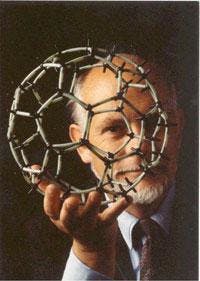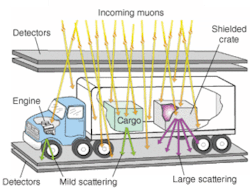In August of 1955, 74 individuals attended the first formal meeting of SPIE-Society of Photo-Optical Instrumentation Engineers in Hollywood, CA, to exchange ideas and discuss solutions to emerging optical test-and-measurement problems. Fast-forward to early August of 2005, when SPIE will host 5500 people in San Diego, CA, and nearly 3600 presentations and numerous short-courses will be included in the 50th anniversary event-the largest Optics and Photonics conference to date, as measured by papers and presentations.
“SPIE is a not-for-profit society that has become the largest international force for the exchange, collection, and dissemination of knowledge in optics, photonics, and imaging,” according to its Web site. SPIE, now called The International Society for Optical Engineering, sponsors more than 50 conferences and meetings worldwide and is the repository of work from 154,000 authors in 122 countries-a long history of service that is powering a bright future.
“For 50 years, SPIE has helped people share information about optics and photonics, learn everything from the basics to the breakthroughs, and move ideas from R&D labs into new products,” said Peter Hallett, development strategist with SPIE. “We do this with a combination of meetings, publications, and educational programs that evolve in response to new applications of lasers, optics, and photonics.”
Nanotechnology, takes center stage
The SPIE organization continually adjusts conference topics based on input from technical conference chairs and industry specialists. As a prime example, the Optics and Photonics conference (and 50th Annual Meeting) has historically focused on optical engineering, astronomy, and remote sensing. But in 2005, as nanotechnology continues to pervade the scientific community, and light-emitting diodes (LEDs) and organic LEDs (OLEDs) change the field of lighting, primary symposia topics for the Optics and Photonics conference are optical engineering and instrumentation, nanophotonics, and illumination engineering.
FIGURE 1. In his plenary talk at the Optics and Photonics conference in conjunction with SPIE's 50th anniversary, Nobel Laureate Richard Smalley, professor of chemistry at Rice University, will discuss how nanotechnology can help resolve the energy challenge. Smalley was among three recipients of the 1996 Nobel Prize in Chemistry for the discovery of carbon atoms bound in the form of a ball known as ¿buckyballs."
SPIE has quietly become one of the largest nanotechnology-conference organizers in the world. According to Hallett, of 3600 papers to be presented at Optics and Photonics 2005 (held from July 31 to Aug. 4), nearly 900 are releated to nanotechnology, while more than 100 focus on LEDs, OLEDs, and illumination engineering. Starting it all off on Sunday, July 31, is a plenary talk by Richard Smalley of Rice University (Houston, TX), one of three recipients of the 1996 Nobel Prize in Chemistry for the discovery of carbon atoms bound in the form of balls known as “buckyballs” (see Fig. 1). Smalley will discuss how nanotechnology can help resolve the worldwide energy challenge.
Papers on nanophotonics will include “Optical tweezers: biophysics, one molecule at a time,” a keynote presentation in conference 5930 by Steven Block of Stanford University (Stanford, CA) that highlights the nature of tools that are used to manipulate particles on the nanoscale; and “Polarization-dependent tip-enhanced Raman spectroscopy for nanoscale analyses of molecular vibrations” in conference 5928 by Satoshi Kawata, Norihiko Hayazawa, and colleagues at The Institute of Physical and Chemical Research (RIKEN) Nanophotonics Laboratory (Saitama, Japan) and Osaka University (Osaka, Japan), which describes the use of polarization properties of tip-enhanced Raman spectroscopy by using radially and azimuthally polarized light illuminations combined with a sharpened metallic probe tip and discusses the relationship between tip enhancement and Raman-vibrational symmetries of single-walled carbon nanotubes.
Defense and security
Defense and homeland-security topics represent another aspect of the conference, with more than 100 presentations and papers. Steve Griggs, program manager for the Advanced Technology Office of the Defense Advanced Research Projects Agency (DARPA; Arlington, VA), will deliver a paper, “DARPA free-space optics” in conference 5892 in the Optical Engineering and Instrumentation symposium, which details enabling technologies that are revolutionizing the applicability of free-space laser communication.
Also in this symposium, two papers of interest to security and threat detection in conference 5923 are “Cooperative monitoring of reactors with cubic-meter scale antineutrino detectors” by researchers at Sandia National Laboratories (Albuquerque, NM) and Lawrence Livermore National Laboratory (Livermore, CA) and “Demonstration of multiple-scatter cosmic-ray muon radiography” by researchers at Los Alamos National Laboratory (LANL; Los Alamos, NM). The first paper discusses detection methods for antineutrinos (particles produced in massive quantities in nuclear reactors that can be used to monitor reactors at a distance to detect illegal diversion of fuel for nuclear weapons production) and the second describes techniques that use radiation from cosmic-ray muons to image large objects such as vehicles and cargo containers to screen for nuclear material (see Fig. 2). Considering recent news events related to the proliferation of nuclear weapons, these topics will be of interest not only to scientists, but to the general public as well.

